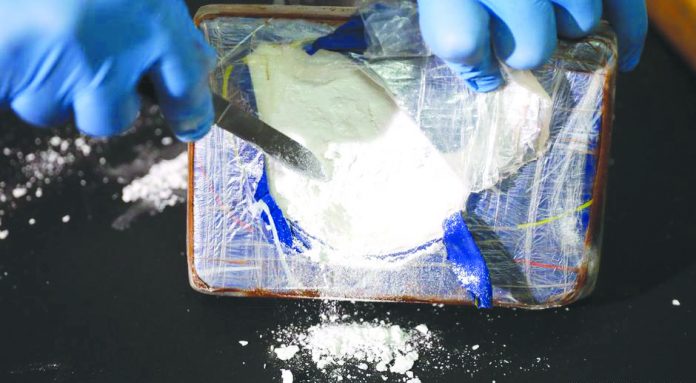
ILOILO City – Is cocaine being dumped clandestinely in the waters of Region 6, too?
The Philippine Drug Enforcement Agency (PDEA), Maritime Command (MARICOM) and Philippine Coast Guard (PCG) are on alert.
Bricks of cocaine in waterproof wrappers have been recovered from some areas along the country’s eastern coastline, from Aurora province to Samar, down to Surigao del Sur and Davao Oriental.
President Rodrigo Durterte said a Colombia-based international drug syndicate may have entered the country and that the cocaine bricks thrown overboard were being recovered by drug traffickers.
PDEA Region 6 director Alex Tabalate said his agency, MARICOM and PCG agreed to tightly monitor the waters of Western Visayas.
Since Feb. 10, more than 100 kilos of cocaine worth P871 million have been recovered on the shorelines or off the waters of Surigao del Norte and Surigao del Sur, Dinagat Island, Davao Oriental, Quezon, Camarines Norte and Camarines Sur and Aurora.
With a length of 36,289 kilometers, the Philippines is one of the countries in the world that have the longest coastline.
While admitting that it is difficult to guard Philippine shores, Philippine National Police (PNP) Maritime Group director, Chief Superintendent Rodelio Jocson said they already increased patrol security.
The blocks of “floating cocaine” were likely to be bound for Australia, PNP’s Director General Oscar Albayalde said yesterday.
The PNP were coordinating with Australian authorities to determine the “signature” of the cocaine to determine if this was the same as those being used by drug dependents in Australia, he added.
“It looks like these came somewhere from the Pacific Ocean and these were not for delivery in the Philippines,” Albayalde told reporters after a meeting with officials from the Australian Federal Police during the launch of the Philippine Internet Crimes Against Children Center at the police headquarters in Camp Crame, Quezon City.
Albayalde said Australian authorities believe that a yacht carrying the contraband might have met an accident while repacking the cocaine or those who picked them up in the high seas might have deliberately dumped them after being chased by coastguard or Navy vessels.
Albayalde said that based on the ranking of cocaine use in the world, the Philippines is number 14 from the bottom of the list.
“So I don’t think we have a market for those kilos of cocaine which have been so far recovered. Accordingly, the probability is that they were supposed to be delivered to Australia because the market is good there for cocaine,” he added.
Both Philippine and Australian authorities believe that the cocaine bricks that were recovered in the past few weeks in Luzon and Mindanao were connected to the 500 kilos of cocaine bricks that were recovered in Papua New Guinea last year.
Albayalde said he does not believe that the cocaine blocks were diversionary tactics of drug syndicates for a bigger shipment of meth as stated by PDEA chief Aaron Aquino.
However, the PNP chief agreed with Aquino’s statement that the country is being used as a transshipment point of drug syndicates.
The PNP and PDEA both said that only two to three percent of drug users in the country are into cocaine as compared to those who are using shabu, marijuana and ecstasy. (With a report from the Philippine News Agency/PN)





![Jaro archbishop calls for prayers following death of Pope Francis “I call upon our faithful in the Archdiocese to offer prayers for his [Pope Francis] eternal repose. What remains now is to continue to pursue the dream he cultivated — that God is near and journeys with us," says Jaro Archbishop Midyphil Billones. JARO METROPOLITAN CATHEDRAL PHOTO](https://www.panaynews.net/wp-content/uploads/2025/04/archbishop_1_resized-218x150.jpg)